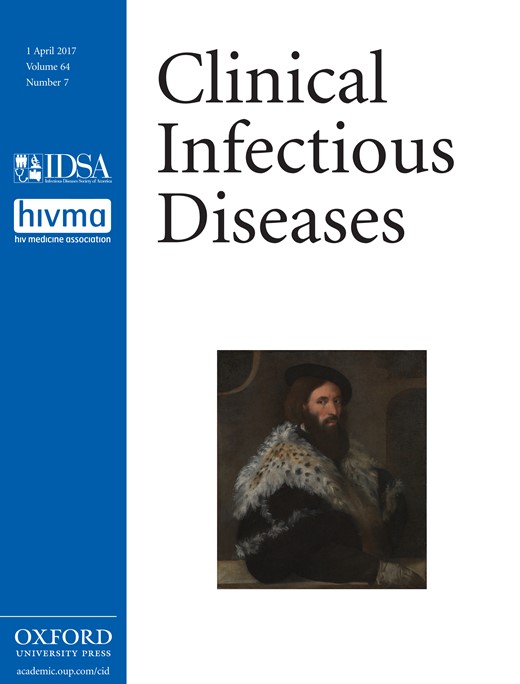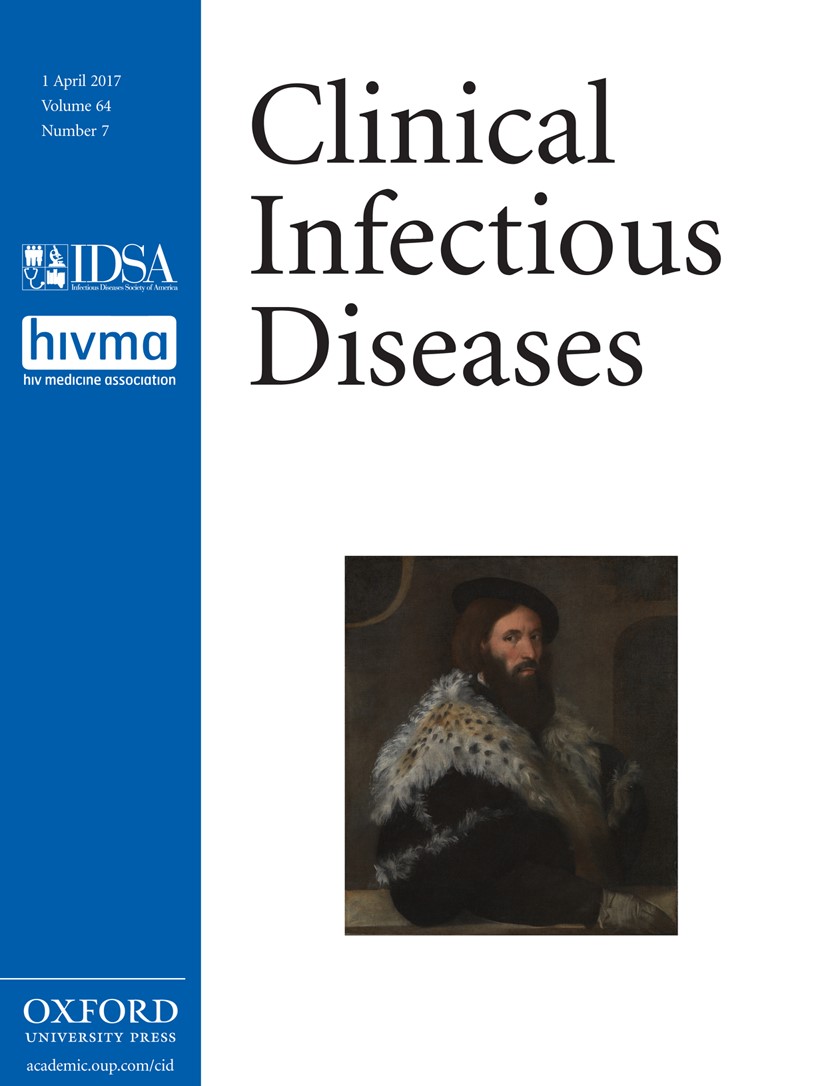
Cover image

Volume 64, Issue 7, 1 April 2017
NEWS
News
IN THE LITERATURE
In the Literature
INVITED COMMENTARY
Crisis in Infectious Diseases: 2 Decades Later
The development of nontoxic broad-spectrum antimicrobial drugs in the mid-20th century led to a culture of empiricism, underdevelopment of diagnostics, neglect of immunotherapy, and selection for drug resistance, which together created the conditions that underlie the current crisis.
In 1996 an article in this journal predicted a crisis in infectious diseases, which subsequently unfolded with a paucity of new drugs, increases in antimicrobial resistance, and underdevelopment in both immunotherapy and diagnostics. This article argues that the root cause of the current-day problems lies in the enormous success of the mid-20th century antibiotic revolution. The availability of low-toxicity broad-spectrum drugs fostered a culture of empiricism and widespread use, which in turn stunted the development of both the specialty and rapid diagnostics while promoting increases in resistance. Two decades later, there are promising signs that widespread recognition of these problems is leading to fundamental changes in the approach to the therapy of infectious diseases. Ultimately, a concerted effort to simultaneously develop pathogen-specific drugs, immunotherapy, and improved diagnostics could provide a qualitatively new platform for confronting the challenge of infectious diseases, which now also includes host dysbiosis.
ARTICLES AND COMMENTARIES
Two Doses of Inactivated Influenza Vaccine Improve Immune Response in Solid Organ Transplant Recipients: Results of TRANSGRIPE 1–2, a Randomized Controlled Clinical Trial
The use of 2 doses of influenza vaccine is safe and immunologically relevant in solid organ transplant recipients, with a number needed to treat for seroprotection and seroconversion <10, supporting the use of 2 vaccination doses after transplantation.
Epidemiology of Carbapenem-Resistant Klebsiella pneumoniae in a Network of Long-Term Acute Care Hospitals
Carbapenem-resistant Klebsiella pneumoniae is a major public health threat, including in the long-term acute care hospital (LTACH) setting. We found a carbapenem resistance rate of 25% among K. pneumoniae clinical isolates from a network of 64 LTACHs in the United States. Resistance rates to gram-negative agents were also high, including a strikingly high prevalence of colistin/polymyxin B resistance of 16%.
Use of Proton Pump Inhibitors and the Risk of Listeriosis: A Nationwide Registry-based Case-Control Study
We investigated the association between proton pump inhibitors (PPIs) and risk of listeriosis in Denmark, 1994-2012, using register data. The matched comorbidity adjusted odds ratio was 2.8 (95%CI: 2.1–3.7). PPIs may increase the risk of listeriosis in vulnerable populations groups.
Sustained Antibody Responses 6 Years Following 1, 2, or 3 Doses of Quadrivalent Human Papillomavirus (HPV) Vaccine in Adolescent Fijian Girls, and Subsequent Responses to a Single Dose of Bivalent HPV Vaccine: A Prospective Cohort Study
Our study demonstrated immune memory and antibody persistence for 6 years following 1 dose of quadrivalent HPV vaccine (4vHPV). Two doses of 4vHPV induced similar vaccine-type specific antibody response as 3 doses in girls who were vaccinated 6 years ago.
Geographic Differences in Temporal Incidence Trends of Hepatitis C Virus Infection Among People Who Inject Drugs: The InC3 Collaboration
Using longitudinal data from geographically diverse community cohorts, this study informs disease etiology by describing hepatitis C virus (HCV) incidence temporal trends and related exposure behaviors, highlighting the impact early and sustained harm reduction strategies can have on HCV trends.
Ultra-Short-Course Antibiotics for Patients With Suspected Ventilator-Associated Pneumonia but Minimal and Stable Ventilator Settings
Impact of Intravenous Immunoglobulin on Survival in Necrotizing Fasciitis With Vasopressor-Dependent Shock: A Propensity Score–Matched Analysis From 130 US Hospitals
Adjunctive intravenous immunoglobulin (IVIG) was infrequently used in patients with necrotizing fasciitis and shock at US academic hospitals. IVIG had no significant impact on mortality, even when administered within 2 days of hospitalization or specifically to patients with streptococcal or staphylococcal infections.
Complex Routes of Nosocomial Vancomycin-Resistant Enterococcus faecium Transmission Revealed by Genome Sequencing
We generated genome sequence data from 293 Enterococcus faecium isolates from patients with bacteremia spanning 7 years in one hospital. Cases were connected to numerous transmission routes, the complexity of which placed them beyond detection by conventional infection control methods.
Evolution and Transmission of Carbapenem-Resistant Klebsiella pneumoniae Expressing the blaOXA-232 Gene During an Institutional Outbreak Associated With Endoscopic Retrograde Cholangiopancreatography
Two-Phase Hospital-Associated Outbreak of Mycobacterium abscessus: Investigation and Mitigation
We investigated and mitigated a 2-phase clonal outbreak of Mycobacterium abscessus linked to hospital tap water. A combination of tap water avoidance among high-risk patients, including lung transplant and cardiac surgery patients, and water engineering interventions terminated the outbreak.
Modern Healthcare Versus Nontuberculous Mycobacteria: Who Will Have the Upper Hand?
Zika Virus Infects Human Fetal Brain Microglia and Induces Inflammation
Zika virus startled the world with reports of increased microcephaly cases. Here, we demonstrate that Zika virus infects microglia in human fetal brain cells. This highlights a role for microglia and the development of neuroinflammation during congenital Zika virus pathogenesis.
Early-Onset Invasive Candidiasis in Extremely Low Birth Weight Infants: Perinatal Acquisition Predicts Poor Outcome
This manuscript describes a prospective study of early-onset neonatal candidiasis (congenital candidiasis) in extremely low birth weight infants and compares them to infants with late-onset disease and to controls. Early-onset disease predicts dissemination, cardiovascular end-organ damage, and high mortality.
Invasive Candidiasis in Very Premature Neonates: Tiny Tots With Big Problems
T-Helper 17 Cell Cytokine Responses in Lyme Disease Correlate With Borrelia burgdorferi Antibodies During Early Infection and With Autoantibodies Late in the Illness in Patients With Antibiotic-Refractory Lyme Arthritis
Patients with Lyme disease often have pronounced TH17 inflammatory responses. Early in the infection, during erythema migrans, TH17 responses correlate with Borrelia burgdorferi antibodies, whereas late in the disease, in patients with antibiotic-refractory Lyme arthritis, these responses correlate with autoantibodies.
High Frequency of Blackwater Fever Among Children Presenting to Hospital With Severe Febrile Illnesses in Eastern Uganda
We have noted a recent upsurge in blackwater fever among children presenting to hospitals in eastern Uganda and speculate that this may relate to a change in policy toward new artemisinin-based combination therapies for malaria.
Diagnostic Performance of Tuberculosis-Specific IgG Antibody Profiles in Patients with Presumptive Tuberculosis from Two Continents
Samples from >750 patients with presumptive TB in two continents were tested with a field-based IgG serological assay incorporating 57 M. tuberculosis antigens, and showed that responses to single antigens or multiple antigen sets have no clinically useful discriminating power.
Spatial Analysis of the Human Immunodeficiency Virus Epidemic among Men Who Have Sex with Men in China, 2006–2015
We conducted a spatial analysis to identify epidemic foci and trends of HIV among men who have sex with men (MSM) in China. Assorted spatial analyses reveal concentrated HIV epidemic among young MSM in Chinese cities, calling for intensive interventions.
BRIEF REPORTS
Hepatitis E Virus (HEV) Infection in Anti-HEV Immunoglobulin G-Carrying Patients After Successful Hepatitis C Virus Treatment: Reactivation or Reinfection?
Primary Prophylaxis for Cryptococcosis With Fluconazole in Human Immunodeficiency Virus–Infected Patients With CD4 T-Cell Counts <100 Cells/µL and Receiving Antiretroviral Therapy
PHOTO QUIZ
A Pancreas Transplant Recipient With Cutaneous Lesions After Handling A Rose Bush
INVITED ARTICLE
ANTIMICROBIAL RESISTANCE
The Use of Noncarbapenem β-Lactams for the Treatment of Extended-Spectrum β-Lactamase Infections
The continued rise in infections caused by extended-spectrum β-lactamase (ESBL)–producing pathogens is recognized globally as one of the most pressing concerns facing the healthcare community. We review the available data for the use of cephamycins, cefepime, piperacillin-tazobactam, ceftolozane-tazobactam, and ceftazidime-avibactam for the treatment of ESBL infections.



